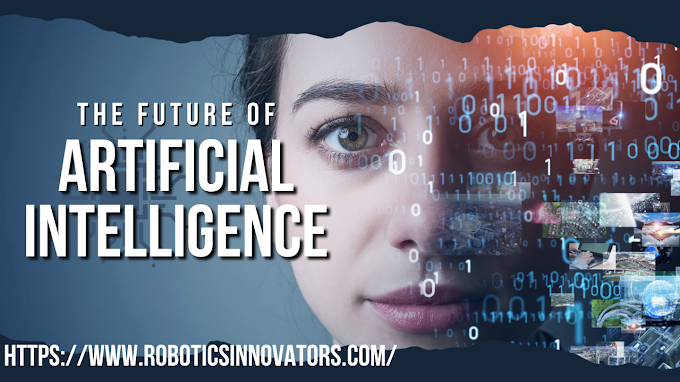Introduction
In 2017, a robot implanted two dental implants into a lady in China, ushering in a new age that may be best described as being driven by dental automation. The engaged doctors did not actively take part in any of the surgeries; instead, they simply oversaw the procedure. While many people think that robots won't replace dentists anytime soon, some contend that they will in the next several decades. Surveys have indicated that, due to their improved accuracy and precision in dental treatments, current technological advancements have significantly contributed to the widespread usage of robots in the area of dentistry. "The use of robotics in dentistry can provide better, more accurate treatments with high-quality work, according to Kumar et al. (279). Additionally, they are great at streamlining operations, which aids in the delivery of high-quality care. Because dentistry has to progress and provide better treatment, I think robots will eventually take the job of dentists.
Robots in dental practice
Innovation in this industry is now widely used, thanks to recent advancements in technology. Examples of technologies leading the way for the automation of the field include robots, navigational dentistry, and nanotechnology (Sun et al., 57). Robotics have a wide range of uses, including implant therapy, the installation of equipment, the correction of oral lesions, and dental surgery. Because of their improved accuracy and precision, robotic systems are utilized (Bhat 67). Additionally, they are successful in streamlining work procedures, aiding in the delivery of high-quality treatment. The creation of new diagnostic techniques and therapeutic treatment methods, as well as the maintenance of oral health, have all greatly benefited from the current applications of AI (Kumar et al., 278). Dental professionals are increasingly adopting robots to carry out certain operations and implant treatments (Bhat 67). Orthodontics, endodontics, periodontics, and restorative dentistry are just a few of the important dental fields where innovations are now being researched and developed.
Robots will replace dentists in the dental field.
With current technological advancements, it is becoming more and more obvious that dentists will be completely mechanized over the next several decades and replaced by robots. According to surveys, many healthcare institutions are adopting robotics for a variety of tasks, such as digital milling, dental implants, fillings, and measurements with a laser (Bhat 67), as previously stated. Two implants were placed in a woman in China by a robotic dentist. According to reports, the procedure was the first completely automated dental implant operation performed entirely by a robot (Lui). Doctors did not actively participate in the process, although they did monitor it. Based on pre-programmed orders that provided instructions on how to complete the task, the robot carried out the procedures, and "the implants were fitted within a tolerance of 0.2–0.3 mm—matching the standards required for this type of procedure" (Lui, par. 3). The Stomatological Hospital and Beihang University developed the technique, which proved that dentistry could be automated.
Because AI is offering solutions that improve the accuracy and precision of dental operations, robots will eventually replace dentists. The incidence of medical mistakes and the failure of implants are two issues that humans face when practicing dentistry. By automating dentistry, the issue of frequent surgical mistakes might be resolved using a mix of technology and dental experience (Bhat 67). The quality of care is raised and the likelihood of mistakes is decreased when operations are carried out automatically. Because some parts of the mouth are small and difficult to access, human error is common while doing oral surgery (Kumar et al., 279). Robots, on the other hand, can alleviate this issue since they can "safely perform dental surgeries like implantations" in a constrained area like the mouth cavity with more precision and agility" (Lui, par. 4). The first robotic system to be used in dentistry in the United States, Yomi, was authorized by the Food and Drug Administration (FDA) in 2017 (Lui). In contrast to the Chinese approach, Yomi assists the dentist throughout pre- and intra-operative procedures and is under his or her direction. Yomi's growing popularity in America is evidence that many dentists are ready to automate certain operations while maintaining control over others.
Robotics and dynamic navigation (DN) technology are being used in the dentistry industry to increase the consistency, effectiveness, and security of dental operations. Dental navigation technologies are described as "auxiliary systems for implantations; such systems are based on medical imaging technology in combination with optical positioning" (Sun et al., 57). Endodontic microrobots are frequently utilized to increase process safety by reducing the likelihood of typical mistakes such as inadequate canal preparation, inappropriate equipment positioning, and the loss of the apical foramen (Webb and Sommers).
The success of dental treatments varies greatly, and a great deal of it depends on the dentist's skill. Endodontic microrobots, on the other hand, can close the knowledge and skill gap by minimizing mistakes and delivering the best caliber of dental treatment (Webb and Sommers). For instance, certain advancements employ micromachine technology, which, although being operated by a person, executes root canal treatments without mistake (Kumar et al., 279). Precision drilling, filling, cleaning, and probing are all automated to reduce human error and increase patient safety (Sun et al., 59). Numerous dental operations include health hazards, including "tissue necrosis; nerve injury; harm owing to perforation of the inferior border, lingual plate, labial plate, or inferior alveolar canal; injury due to perforation of the maxillary sinus. The health of patients may also suffer as a result of issues that arise during implant installation. According to research, implants fail at a pretty significant rate, necessitating improved care. These have been linked to a lack of professional experience, medical mistakes, and health issues present throughout therapy (Bhat 67). These issues can be resolved, and the effectiveness of implants and procedures has increased with the use of robots and navigational surgery.
Another area of technology that will contribute to the automation of dentistry is nanotechnology. It entails the creation of nanobots, which are extremely small robots that may be utilized to carry out delicate processes (Webb and Sommers). According to Webb and Sommers, "the use of nanotechnology in dentistry, also known as nanodentistry, opens up treatment options in restorative dentistry, orthodontics, and periodontics." The invention, which is now in development, will be utilized to enhance procedures for surgery, therapy, and diagnostics. Due to its broad variety of applications, which span from periodontics to orthodontics, nanodentistry has been identified as a crucial part of the profession of the future (Webb and Sommers). In the aforementioned sectors, robots can be applied in a variety of ways. For instance, its use in restorative dentistry might include anything from the remodeling of the teeth to the preparation of cavities. They are successful because they operate at the cellular level, which enables them to be employed to precisely carry out sensitive functions (Webb and Sommers). Additionally, the delivery of medication and bone replacement can benefit from nanotechnology. The use of robots in dentistry education has also become very common. Dentists utilize a robot designed to resemble a human being during training to practice important dental operations.
Arguments in opposition and rebuttal
Dental automation opponents claim that due to the necessity of human compassion in patient care, the industry cannot be totally automated. According to a poll performed by academics at Florida's Embry-Riddle Aeronautical University, many individuals would be reluctant to allow robots to perform certain procedures on them. They suggested that robots are not sufficiently developed to carry out invasive treatments like root canals and gum surgery. They agreed to allow robots to exclusively carry out tasks like dental whitening, extraction, and cleaning. Others contend that a person should handle tasks like shading and staining because they can pay attention to detail that a robot cannot.It is an essential component of dentistry, and compassion is something that a robot cannot emulate. A human dentist helps the patient unwind and overcome their dread of having an uncomfortable and intrusive operation. Because they can be taught to sense human sorrow and stress, research has demonstrated that robots can emulate human compassion. Robots may detect symptoms of distress in people, such as dilation of the pupils, high blood pressure, and rapid breathing.
Machines are unable to identify facial expressions that indicate human distress or to demonstrate empathy. The need for compassion, however, is outweighed by the accuracy, safety, and precision of their operation. Additionally, computer-aided relaxation training (CARL) can be utilized to assist patients in getting over their concerns and to play the role of human compassion. Many dental tasks that humans undertake may be taught to be performed by robots. The many advantages of robots are disregarded by opponents of automation because they are so focused on the requirement for compassionate human connection. The rejection of robots in favor of empathy is superseded by improved patient safety, reduced medical mistake rates, and faster and more effective service. It may take several years before autonomous dental robots are a reality and dentistry is fully automated. The process may be sped up, though, by increasing acceptance and use of these technologies in light of recent advancements. This is clear from the outcomes attained by willing countries.









.jpg)



